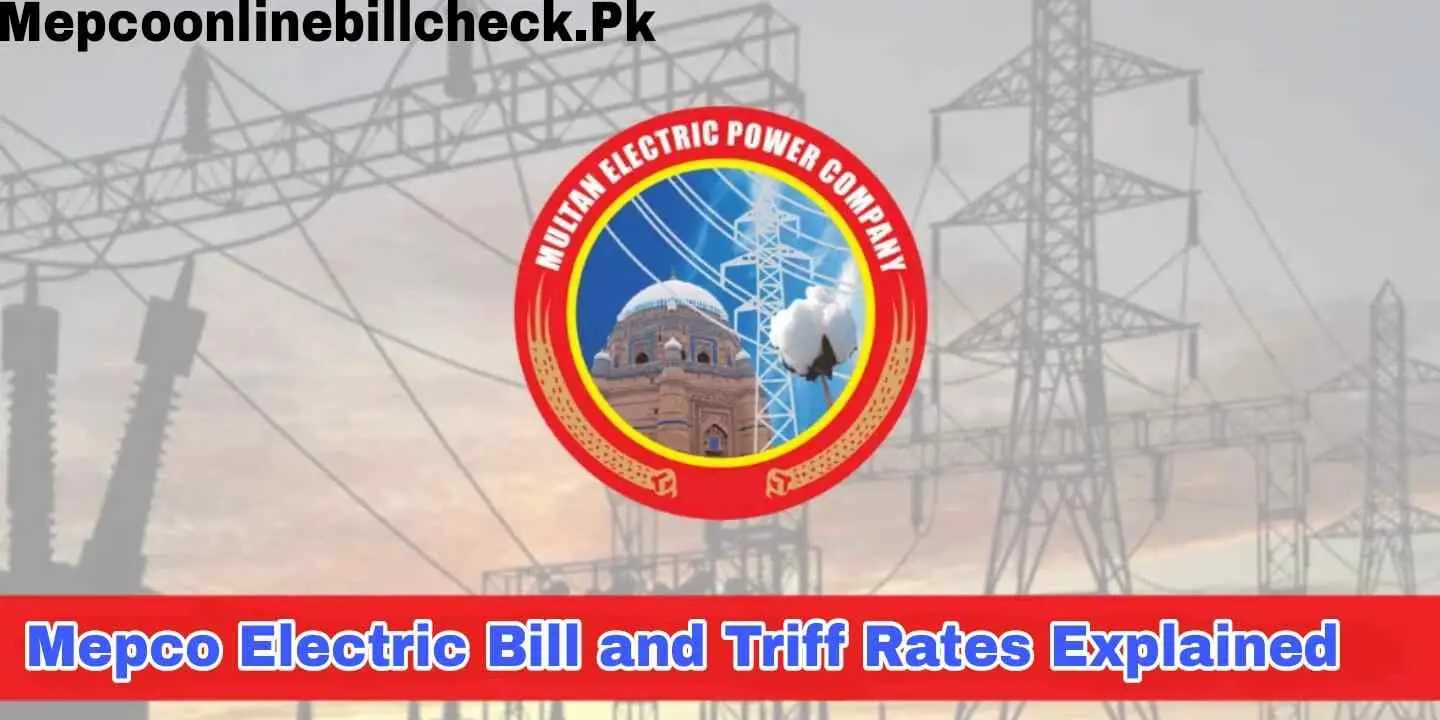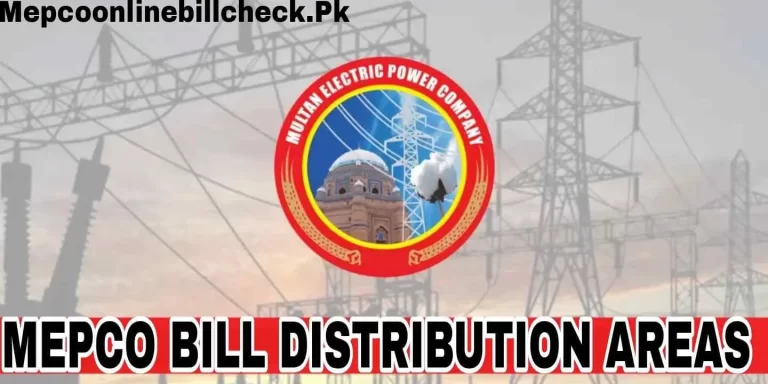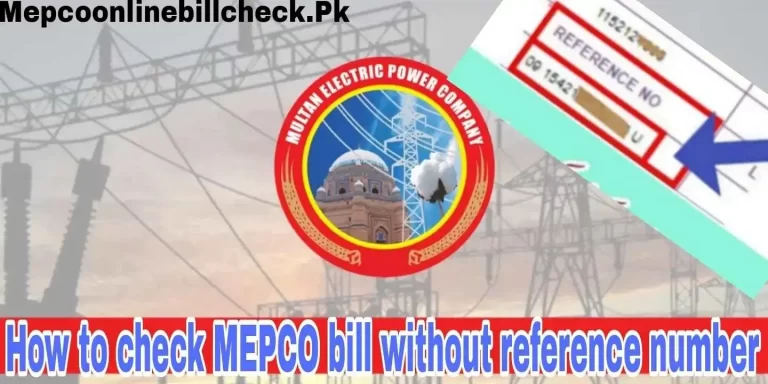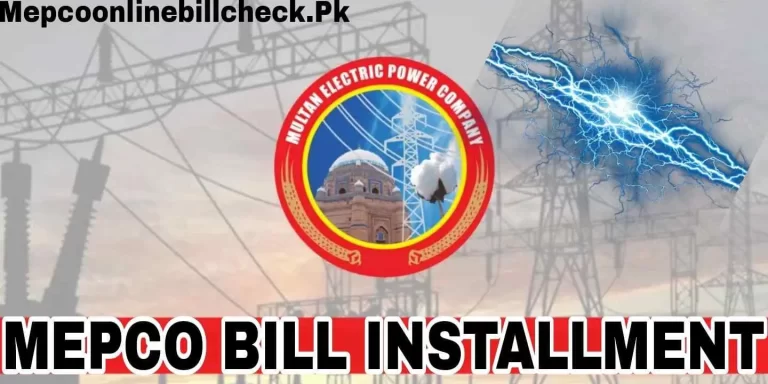MEPCO Electric Bill and Tariff Rates 2024
If you’re a Multan Electric Power Company (MEPCO) customer and wondering about MEPCO Electric Bill and Tariff Rates, deciphering your electricity bill can be a bit like solving a puzzle. With a multitude of charges and taxes in the mix, it’s easy to feel overwhelmed. That’s where our comprehensive guide comes in.

In the following lines, we’ll unravel the complexity of your MEPCO electric bill and the tariff rates connected to it. We’ll break down each charge, making it crystal clear how they’re calculated. You’ll gain insights into the various tariff rates and see precisely how they impact the final amount on your bill. This knowledge empowers you to make well-informed choices and take charge of your electricity consumption effectively.If you’ve ever lost your MEPCO bill reference number, we’ve got you covered. Find out how to retrieve your bill information without the reference number. Don’t forget to delve into our insights on MEPCO’s tariff rates.
Table of Contents
MEPCO Electric Bill Summary
Your MEPCO electric bill is a detailed statement that provides an overview of your MEPCO Electric Bill and Tariff Ratesa,electricity consumption and the associated charges. To help you grasp the intricacies of this document, we’ll break it down into its primary sections:
1. Customer Information: This section contains essential details about you, the customer. It includes your name, address, connection type (whether it’s for residential or business use), and the billing period, specifying the timeframe for which these charges apply.
2. Meter Information: Here, you’ll find specific information about the electric meter located at your premises. This includes the meter number, the date it was installed, and the current meter reading, allowing you to track your electricity usage.
3. Billing Details: This is a critical segment that provides a detailed breakdown of your electricity consumption and the associated costs. It displays the current and previous meter readings, the number of units of electricity consumed during the billing period, and the cost per unit. This section is particularly vital for understanding your usage and the financial implications.Curious about estimating your MEPCO electric bill? Use our MEPCO Bill Calculator to calculate your expenses.
4. Taxes and Other Charges: The final section itemizes any supplementary costs present on your bill. These can encompass taxes, surcharges, and other fees imposed either by the government or the utility provider. The amount you pay in this category may be either a fixed sum or a percentage of your total bill. The specific amount is contingent on multiple factors, including the amount of electricity consumed.
In essence, your MEPCO bill serves as a deatailed record of your electricity consumption and costs. It equips you with the information needed to monitor your expenses and gain insight into the various elements contributing to your total bill. Understanding each section enables you to manage your energy consumption more effectively and make informed decisions regarding your electricity usage.
Understanding MEPCO Electric Bill Charges
Understanding your MEPCO bill requires unraveling the various charges that contribute to the final amount. In this comprehensive guide, we’ll delve into the most common charges and provide clear explanations for each, giving you a thorough grasp of your electricity bill.
1. Energy Charges:
- Energy charges represent the cost of the electricity you’ve consumed during the billing period. These charges are determined by the units of electricity you use and the applicable tariff rate. It’s the core cost of keeping your lights on and appliances running.
2. Meter Rent:
- Meter rent is a fixed monthly fee imposed by MEPCO to maintain the electricity meter installed at your premises. The specific amount you pay for meter rent depends on the type and capacity of the meter in use. This charge ensures the proper functioning and upkeep of the meter, which is vital for accurate billing.
3. Fuel Adjustment Charges (FAC):
- Fuel Adjustment Charges (FAC) are dynamic costs that reflect fluctuations in fuel prices and other factors influencing the expenses of generating electricity. MEPCO Electric Bill and Tariff Rates adjusts this charge every month based on the actual costs incurred by the utility provider. Understanding FAC helps you comprehend why your bill may vary from one month to the next.Checking your MEPCO electricity bill online is simple.
4. TV License Fee:
- The TV license fee is a fixed monthly charge imposed by the government for owning a television set at your premises. MEPCO Electric Bill and Tariff Rates collects this fee on behalf of the government and adds it to your electricity bill. Being aware of this fee on your bill is crucial, as it helps in understanding its origin and purpose.
5. Neelam-Jhelum Surcharge:
- The Neelam-Jhelum surcharge is another fixed monthly fee levied by the government, and it serves to fund the Neelam-Jhelum hydroelectric power project. Just like the TV license fee, MEPCO includes this surcharge in MEPCO Electric Bill and Tariff Rates and collects it on behalf of the government. Knowing about this surcharge gives you insight into the infrastructure development efforts being financed through your bill.
6. General Sales Tax (GST):
- The General Sales Tax (GST) is a federal tax applicable to the sale of goods and services, including electricity. Currently set at a rate of 17%, the GST is calculated based on the total bill amount, encompassing all charges and taxes. Understanding the GST’s impact on your bill provides clarity on the tax component of your electricity expenses.
By comprehending these MEPCO Electric Bill and Tariff Rates, you gain transparency into the cost components and why your bill fluctuates. It empowers you to make informed decisions regarding your electricity usage and manage your expenses more effectively.
MEPCO Tariff Rates
MEPCO Electric Bill and Tariff Rates rates play a pivotal role in determining the cost of electricity for consumers, and understanding these rates is essential for efficient electricity management. In this comprehensive guide, we’ll unravel the intricacies of MEPCO’s tariff rates, shedding light on how they impact your electricity expenses.
1. Dynamic Tariff Adjustments:
- MEPCO bill check and MEPCO tariff rates are not static; they undergo periodic revisions by the National Electric Power Regulatory Authority (NEPRA). These adjustments are influenced by several factors, including fluctuating fuel prices, generation costs, and the ever-present force of inflation. Being aware of these dynamics can help consumers anticipate changes in their electricity bills and make informed decisions.
2. Domestic Tariff Rates:
- The MEPCO Electric Bill and Tariff Rates primarily caters to residential consumers holding either a single-phase or three-phase connection. These rates are designed to accommodate various consumption levels, and the rate you pay is contingent on how much electricity you use. Typically, the higher your consumption, the higher the rate you’ll be charged. Understanding your domestic tariff rate empowers you to manage your household electricity expenses more efficiently and possibly discover opportunities for savings.
3. Commercial Tariff Rates:
- Commercial enterprises and industrial consumers with a three-phase connection fall under the ambit of the commercial tariff rate. This rate is distinct from the MEPCO Electric Bill and Tariff Rates and tends to be higher. It reflects the increased energy requirements of businesses and industries, which often demand more substantial power resources. By understanding the commercial tariff rate, businesses can plan their operational costs effectively and budget for electricity expenses.
4. Industrial Implications:
- The variance in tariff rates for domestic and commercial consumers carries broader economic implications. Businesses factor in these higher rates when planning production costs and pricing strategies, and these rates can influence investment decisions and economic growth. A comprehensive understanding of how tariff rates impact industries is essential for both business owners and policymakers.
In conclusion, comprehending MEPCO tariff rates is more than just understanding the price of electricity. It’s about recognizing the intricate interplay of factors that influence these rates and their far-reaching implications. This knowledge equips consumers, businesses, and policymakers with the insights needed to make informed decisions about energy consumption, budgeting, and the broader economic landscape.
FAQ:
-
What is MEPCO Electric Bill and Tariff Rates?
MEPCO’s Domestic Tariff Rate varies with consumption for residential consumers.
-
How Do Dynamic Tariff Adjustments Affect Me?
Dynamic tariff adjustments can change your electricity costs.
-
Why Do Commercial Rates Differ from Domestic Rates?
Commercial rates are higher due to increased energy demands by businesses.
-
How Do Tariff Rates Affect the Economy?
Tariff rates influence production costs, pricing, and investments in the economy.





